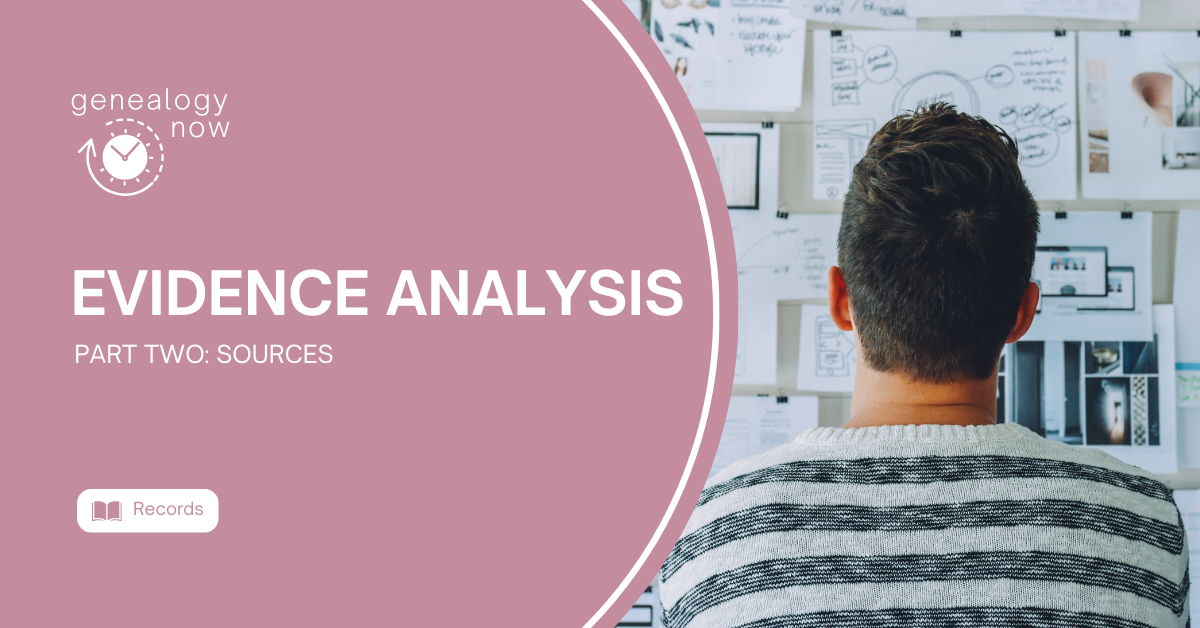
Welcome to the second installment in a six-part series about evidence analysis, or the process by which we determine the reliability of the evidence we discover in our research. Part one discussed the value of evidence analysis and presented three important questions to ask ourselves as we examine historical records about our ancestors:
- When and how was the source created?
- Who provided the information for the source?
- Do the facts in the source directly or indirectly answer the research question?
This post will address the first question, “When and how was the source created?”
What is a Source?
First, we need to define what we are talking about by the word source. A source refers to a historical document or authored narrative that contains information. It is important to remember that the source is NOT the information contained within the record. It is simply the document.
Source Analysis
When analyzing the source, we will place it into one of three categories:
Original – A record created at or near the time of the event. These sources would be considered the “first telling” of the events recorded. Some copies of the original can also be categorized as original sources. These might include a matching copy created at the same time as the original (see census example below), or an unaltered and high-quality photograph or digital image of an original document.
Derivative – A record created later than the time of the event that is based on information obtained from original records.
Authored Narrative – A narrative that presents new conclusions in a written format using information from multiple original and derivative sources.
Examples
Death Certificate
A death certificate, created by eyewitnesses just hours or days after the death occurred, is considered an original source. A physician or other medical certifier validates the death, and a licensed funeral director confirms that the body was properly handled. The funeral director then files the death certificate with the county health department.1
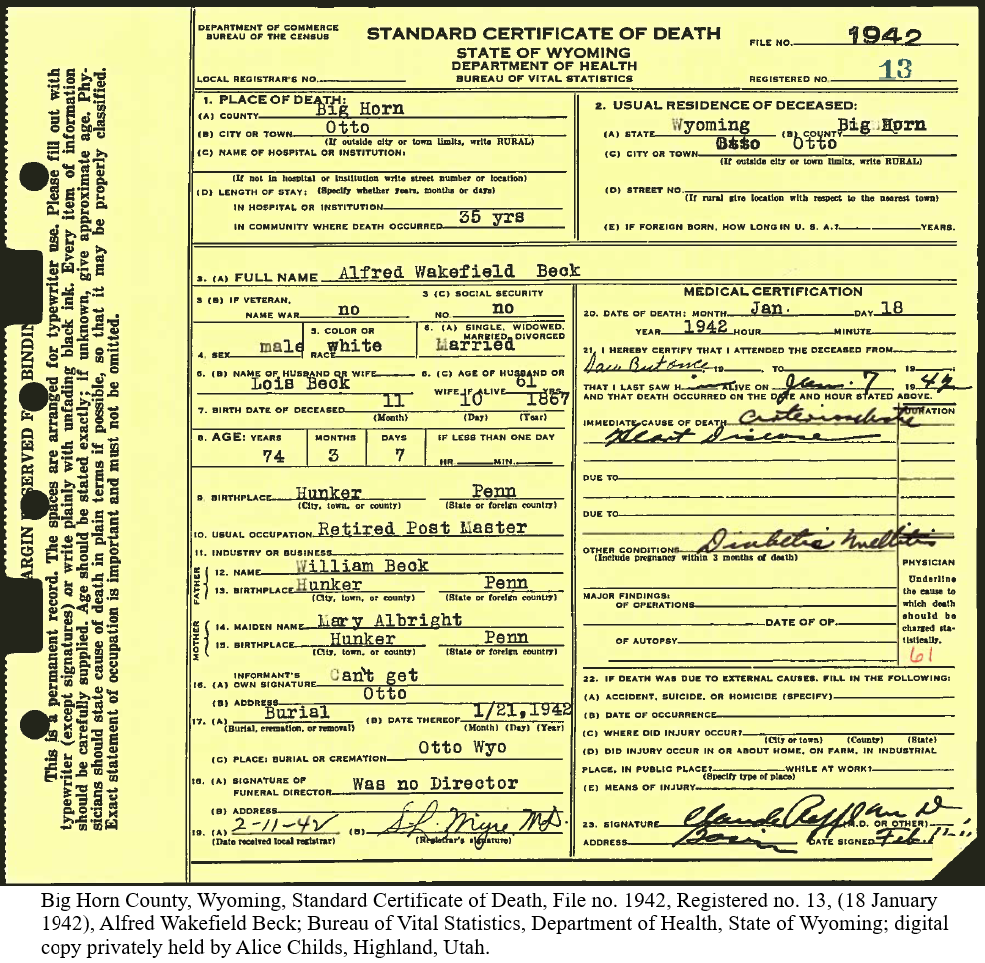
Census Records
A census record is considered an original source. However, this is a good example to think about, because most census records we utilize are actually duplicates of the original enumerator’s copy. After creating the original enumeration, the enumerator was instructed to make two copies of the original, and his instructions were to carefully compare the copies to the original for accuracy.2 Because they were [exact] copies of the originals, created in conjunction with the original by an eyewitness at or shortly after the time of the event, they can be categorized as original records during our analysis. However, it is necessary to keep in mind that mistakes could have been (and often were) made during the copying process.
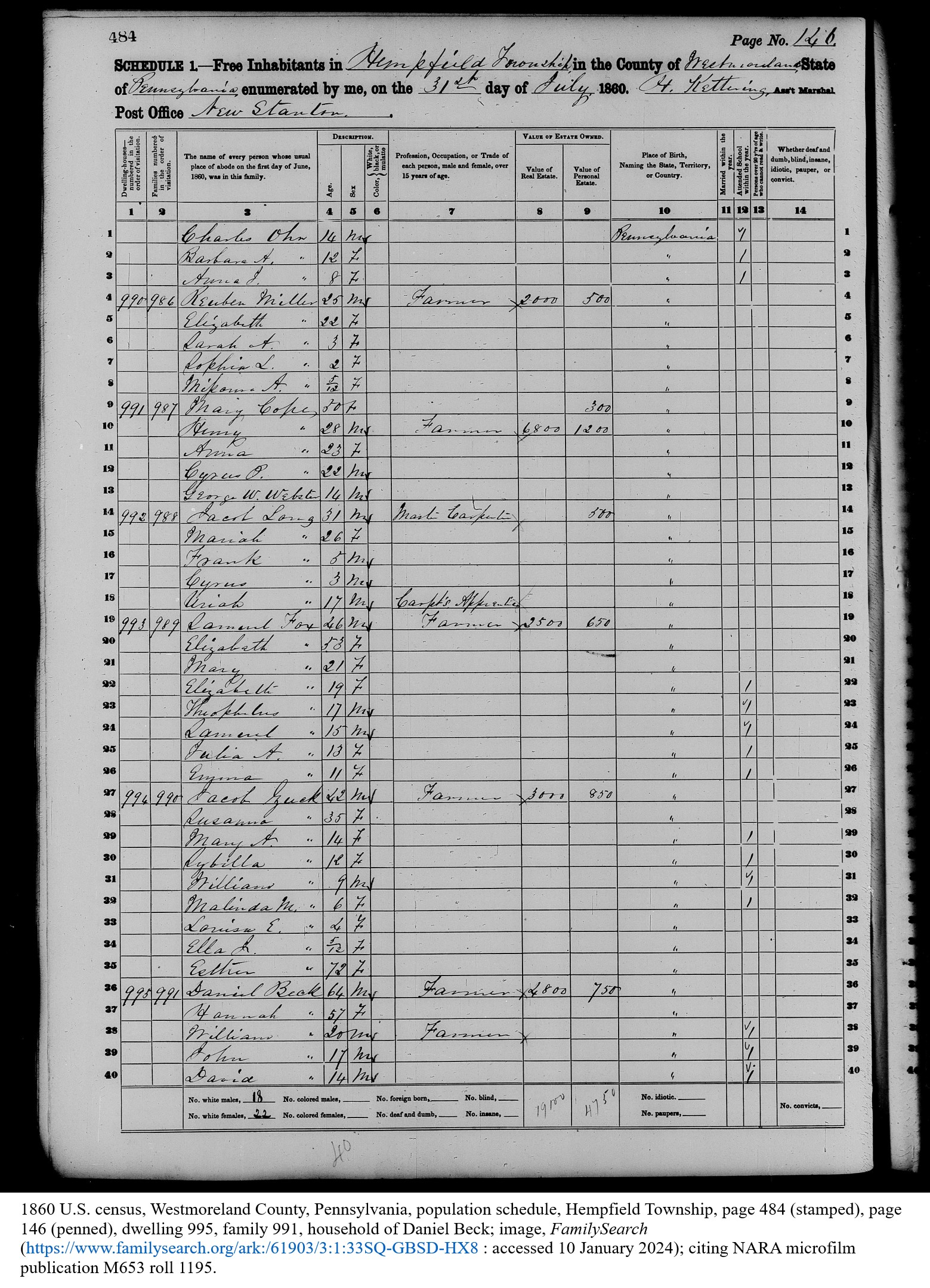
Transcribed Church Records
A transcribed version of original church records would be considered a derivative source, as in these records from Seanor’s Church in Hempfield, Westmoreland County, Pennsylvania, translated and transcribed by Della Reagan Fischer in 1969, many years after the events occurred.
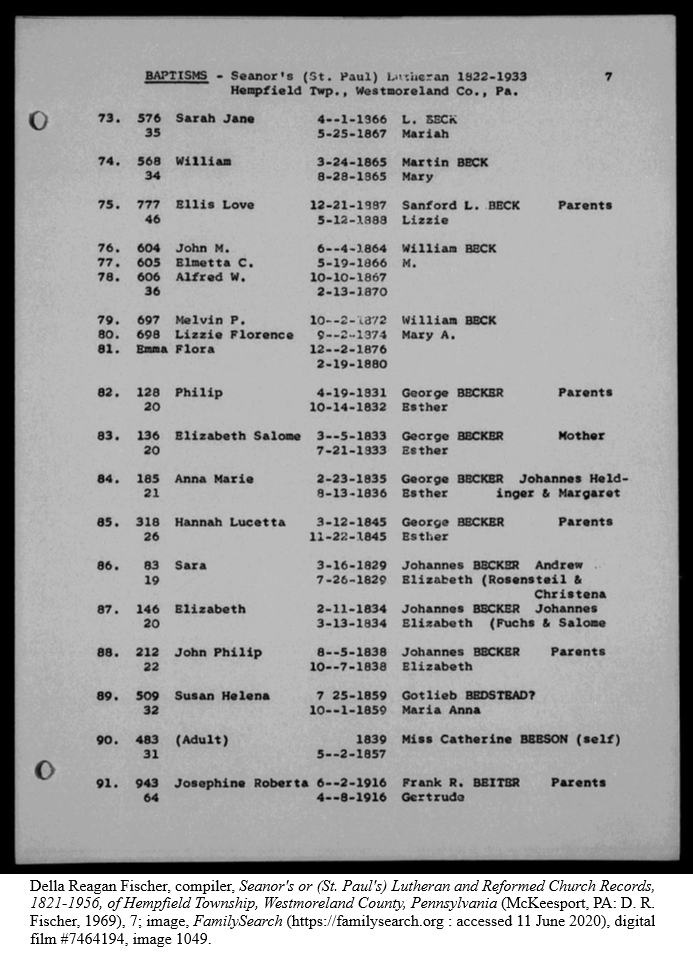
Online Databases
The indexed information from a database on FamilySearch or another website is also considered a derivative source. These records have been created by individuals who type in the information found on original documents. Alfred Wakefield Beck’s birth and baptism are recorded in a FamilySearch collection titled “Pennsylvania Births and Christenings, 1709-1950.” Note that this record states in the upper left-hand corner “No Image Available.” That does not mean that the original record doesn’t exist. It simply means that it has not been included with this collection. You can see that this information came from a book at the FamilySearch Library, as the call number is included in the record.
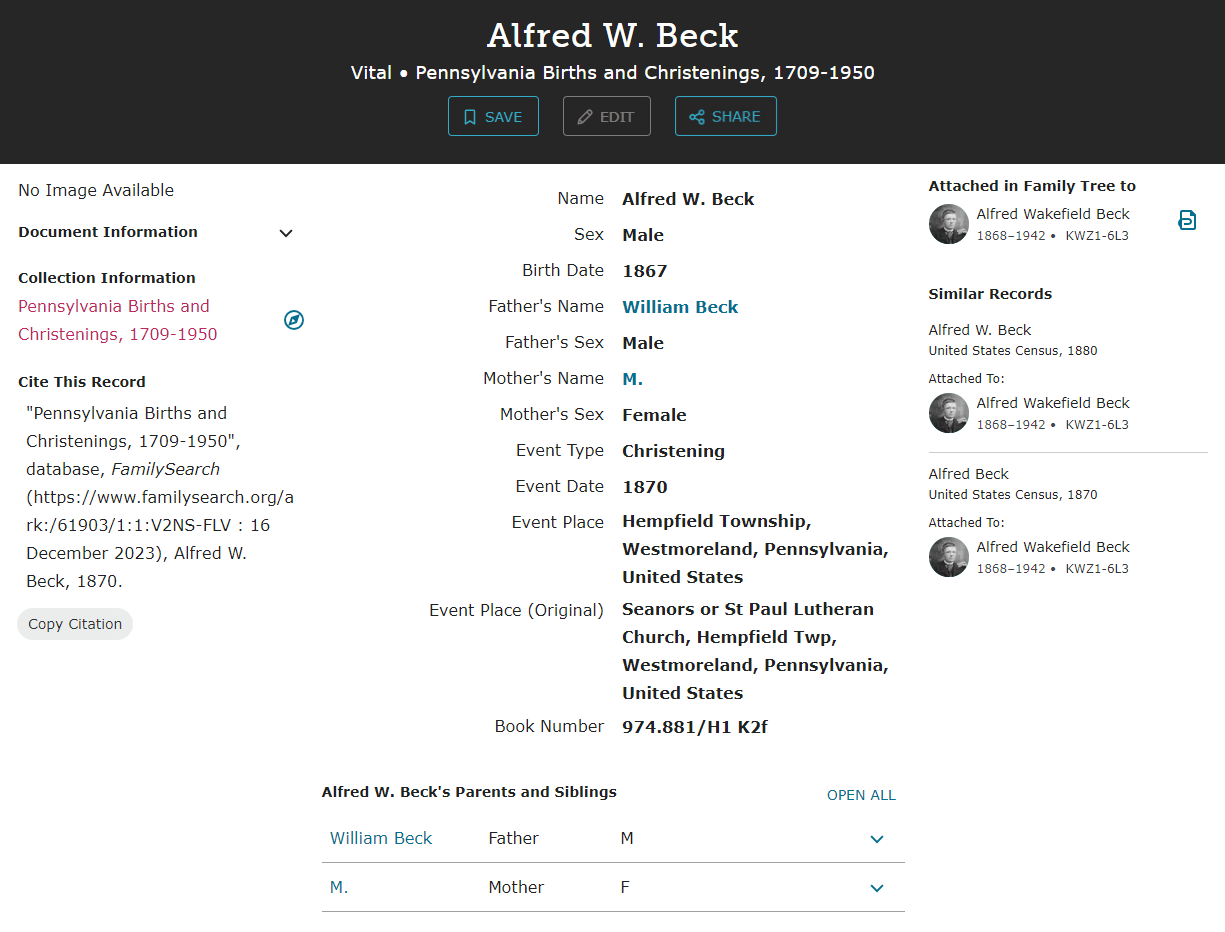
Authored Narratives
Examples of an authored narrative would be a research report, a written family narrative, an article in a scholarly journal, a county history, or an obituary. Each of these written products is created using information gathered from several sources and arranged uniquely by the author.

Best Practices
Genealogists always seek to find the most original form of the document. When researching in databases online, always view the original record. Original sources are usually considered more reliable than derivative or authored sources. This is because they are often created by someone who was an eyewitness to the event being recorded. Additionally, mistakes might have been made during the transcription or indexing process, making derivative sources less reliable. Finally, the original may contain more information than what has been added to the transcription.
Cautions
Just because a source is classified as an original does not automatically mean that the information contained therein is accurate. The person may have inadvertently or purposefully provided faulty facts. Perhaps the person providing the information had a lapse of memory or didn’t actually know their birth date. Perhaps a much older groom did not want to be seen as a cradle robber so he fudged the age he reported for his marriage record.
Whether a document is handwritten or typed does not make it an original, derivative, or authored source. The time and method of creation discussed above are what separate an original source from a derivative source or an authored narrative.
Sometimes more than one type of source is present in a record. Consider a Find a Grave page. The headstone image would be considered an original source because it is an image of the headstone that was usually erected at or near the time of the person’s death and was one of the first recordings of that individual’s death and burial. However, the typed information on the individual’s memorial page would be considered either derivative or authored, depending on whether the contributor merely entered what was inscribed on the headstone on the memorial page or gathered together information from several sources to create a more complete memorial page.
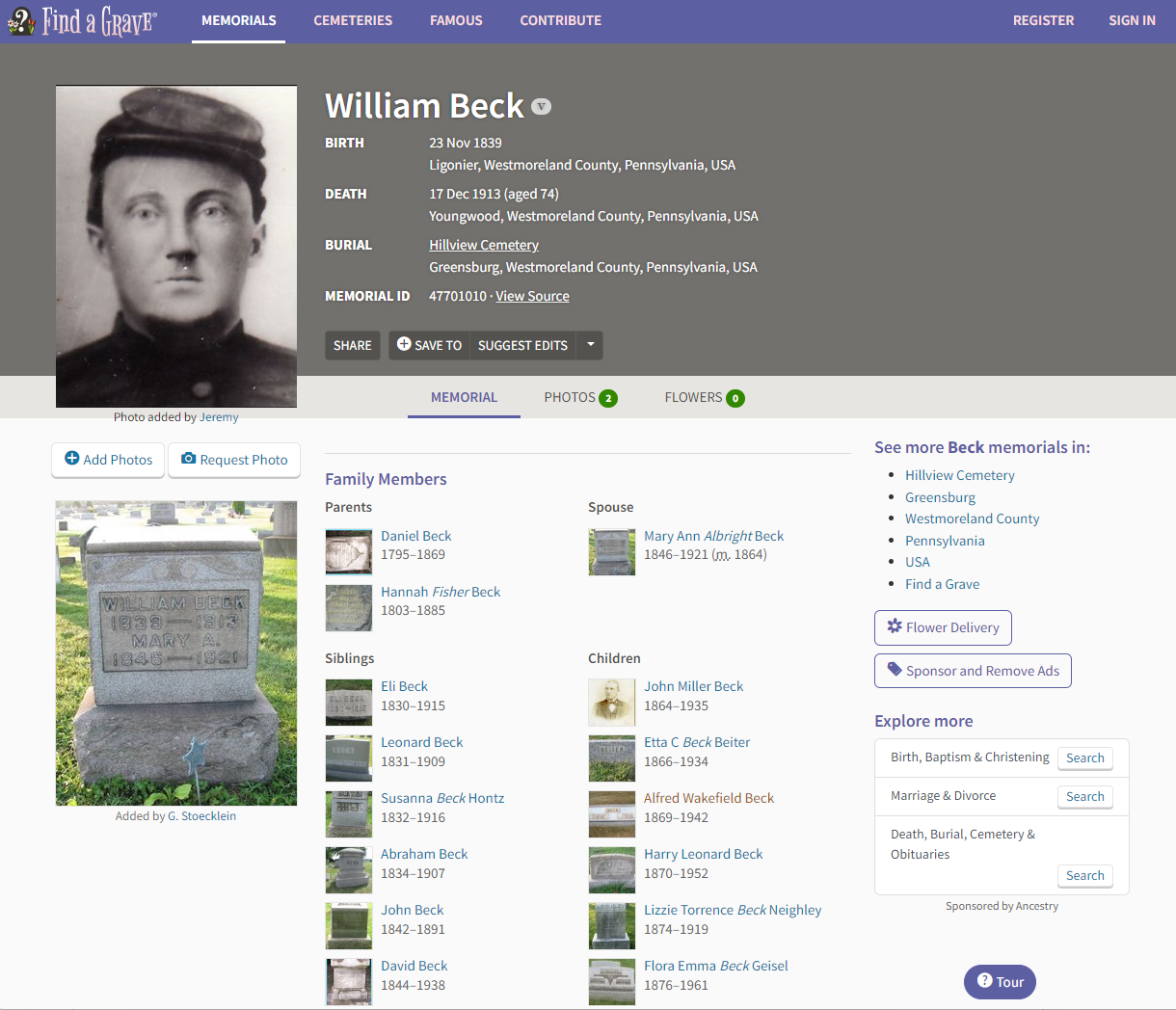
Conclusion*
Understanding the categorization of genealogical sources into Original, Derivative, and Authored Narratives is crucial for effective research. Original sources, created at or near the time of the event, are generally considered the most reliable, but caution is needed as they can also contain errors. Best practices emphasize the importance of seeking the most original form of a document, especially when using online databases. While handwritten or typed nature doesn’t determine the source type, the time and method of creation play a vital role. Researchers should be cautious of potential errors in derivative sources resulting from transcription or indexing processes. Recognizing that a single document may encompass more than one type, such as the example of a Find a Grave page, enhances the accuracy of genealogical analysis.
Challenge
Choose a few available sources for your ancestors. Would they be considered original sources, derivative sources, or authored narratives? Why? Feel free to discuss and ask questions in the comments below.
*The conclusion for this article was generated using ChatGPT. How do you think it did?
Sources:
- “How to Get a Death Certificate,” online article, Everplans (https://www.everplans.com/articles/how-to-get-a-death-certificate : accessed 8 January 2024).
- “Overview of the U.S. Census,” online article, RootsWeb (https://wiki.rootsweb.com/wiki/index.php/Overview_of_the_U.S._Census : accessed 8 January 2024).

Hi Alice,
That is probably the clearest explanation of the levels of genealogical sources for me.
Thank you,
Rosemary
Thank you, Rosemary. I’m glad you found the explanation helpful!